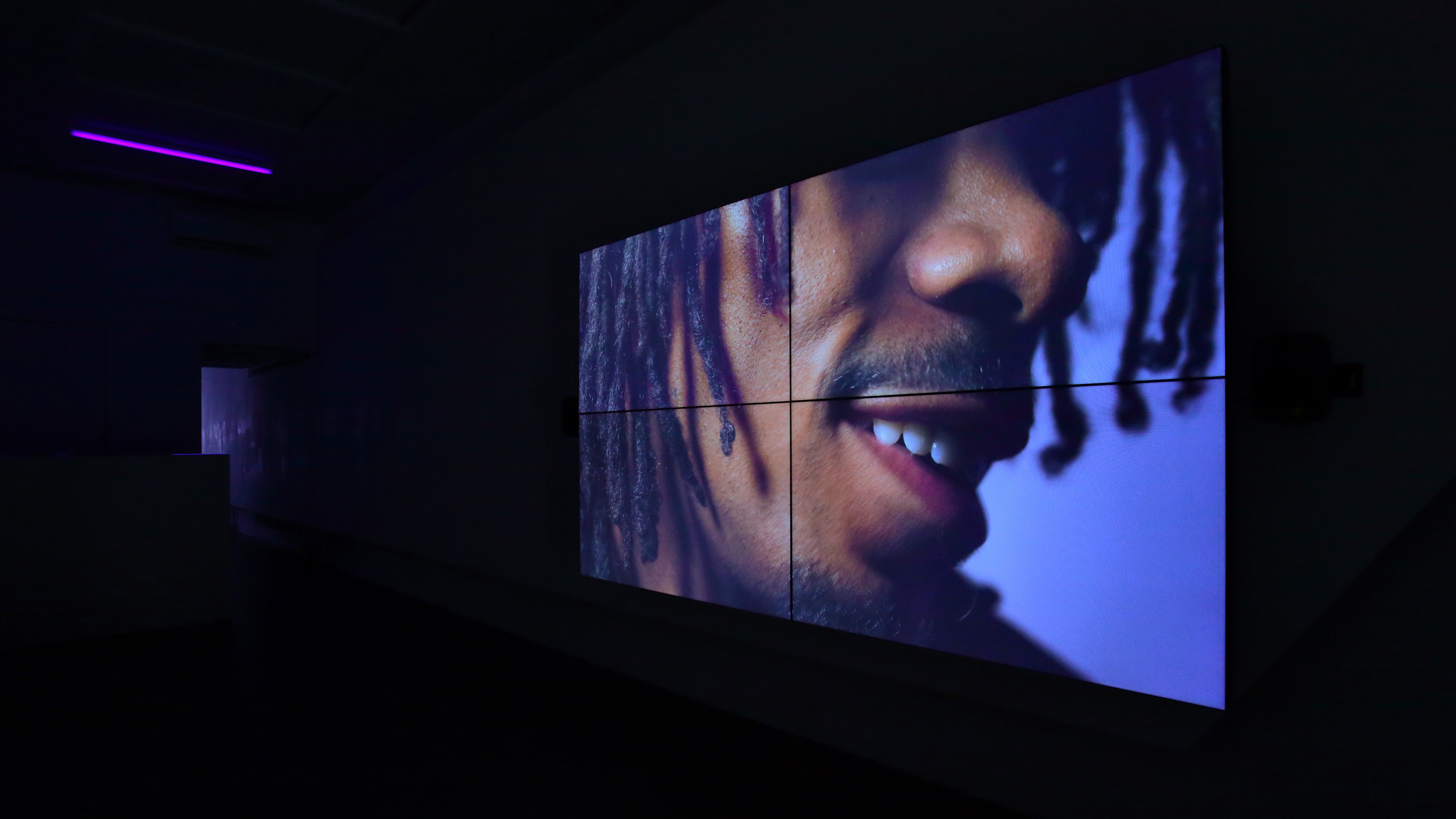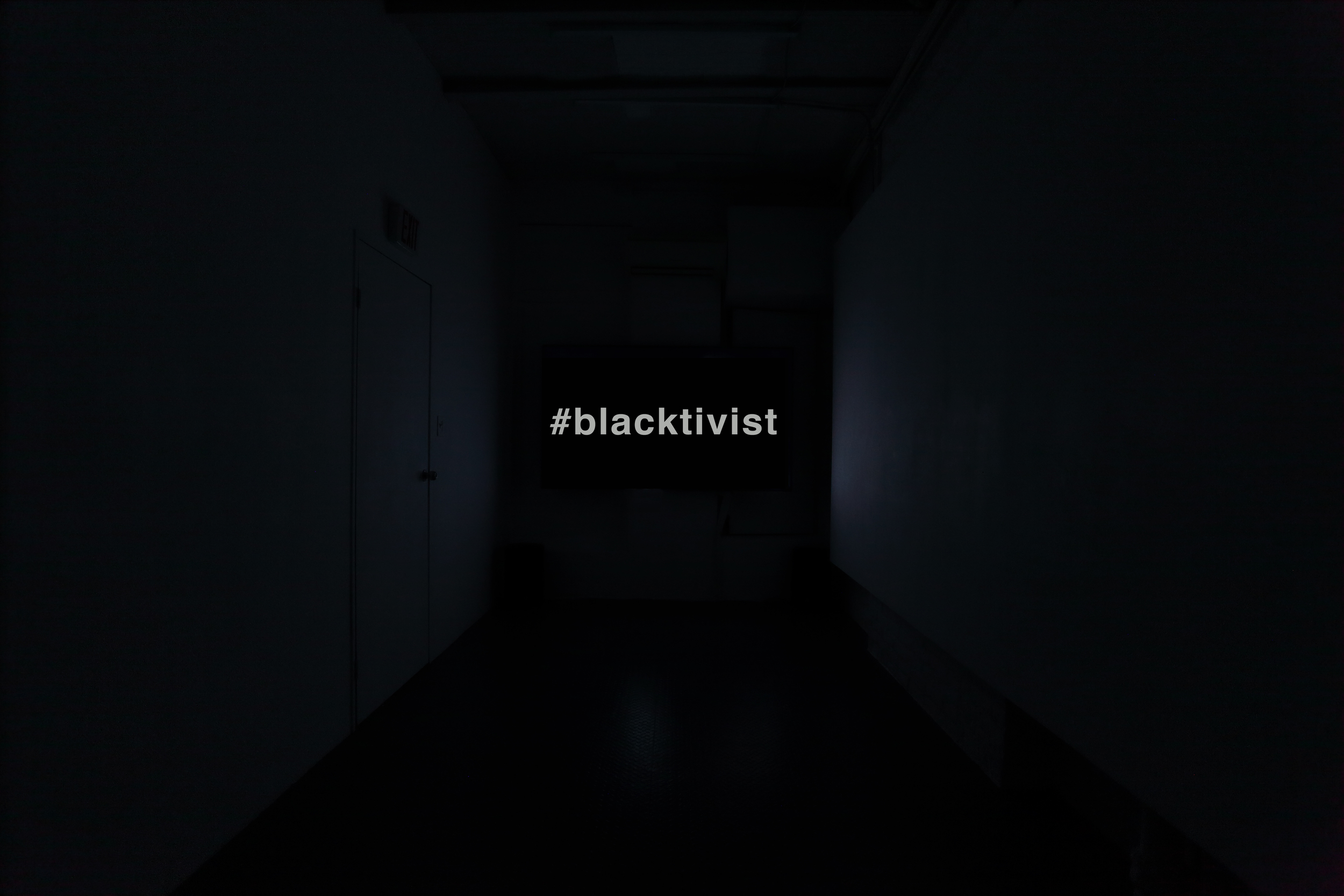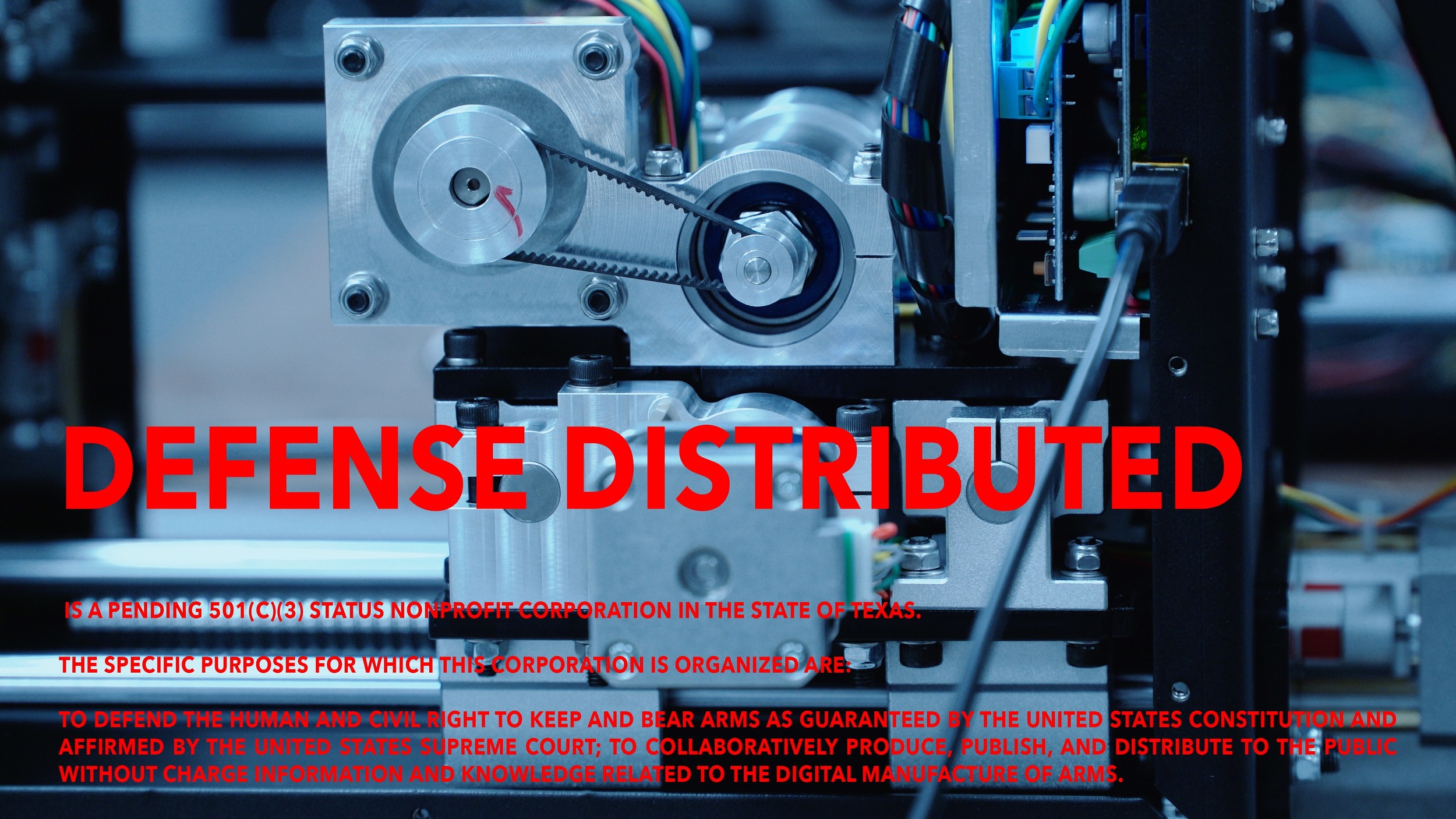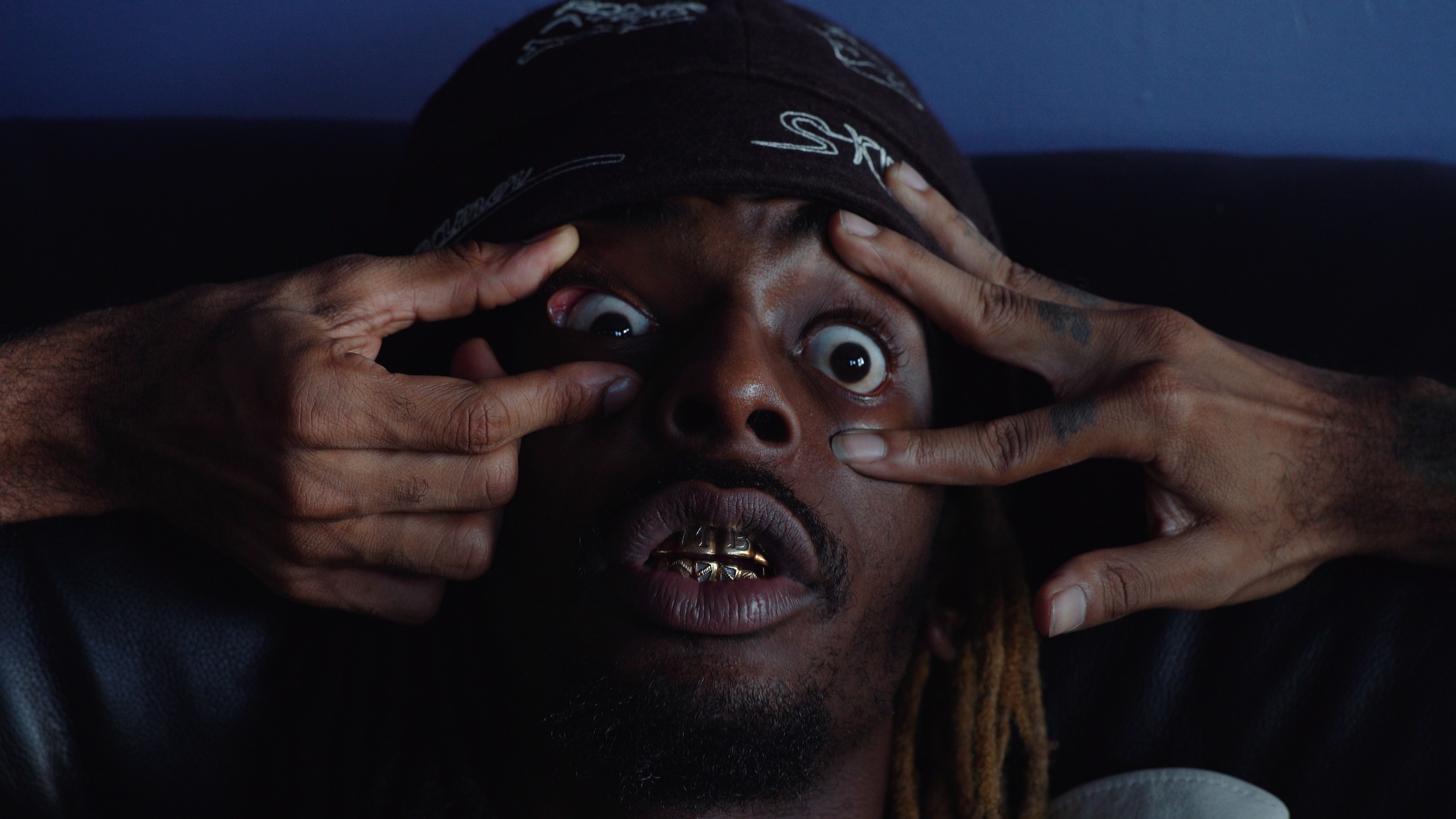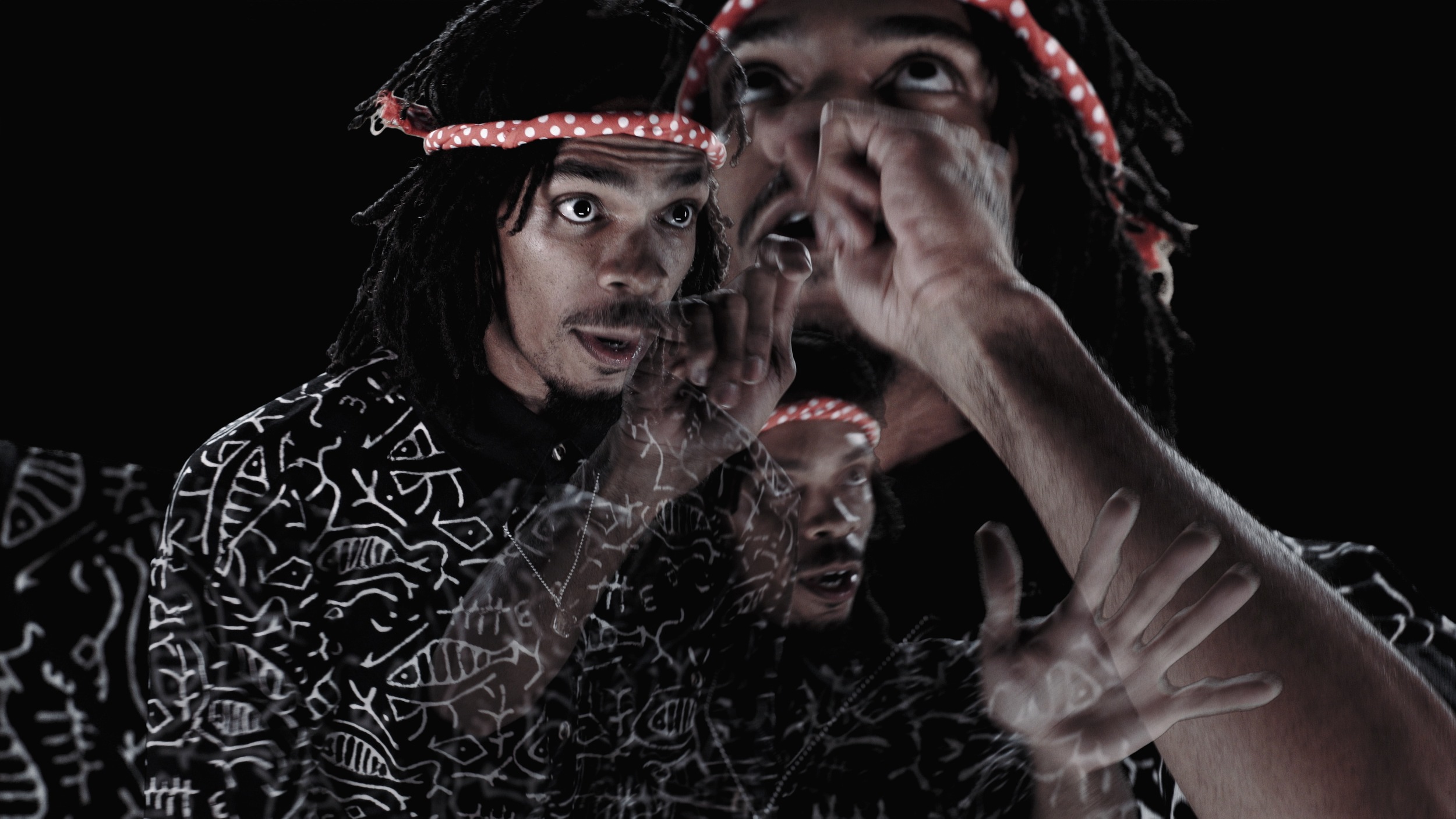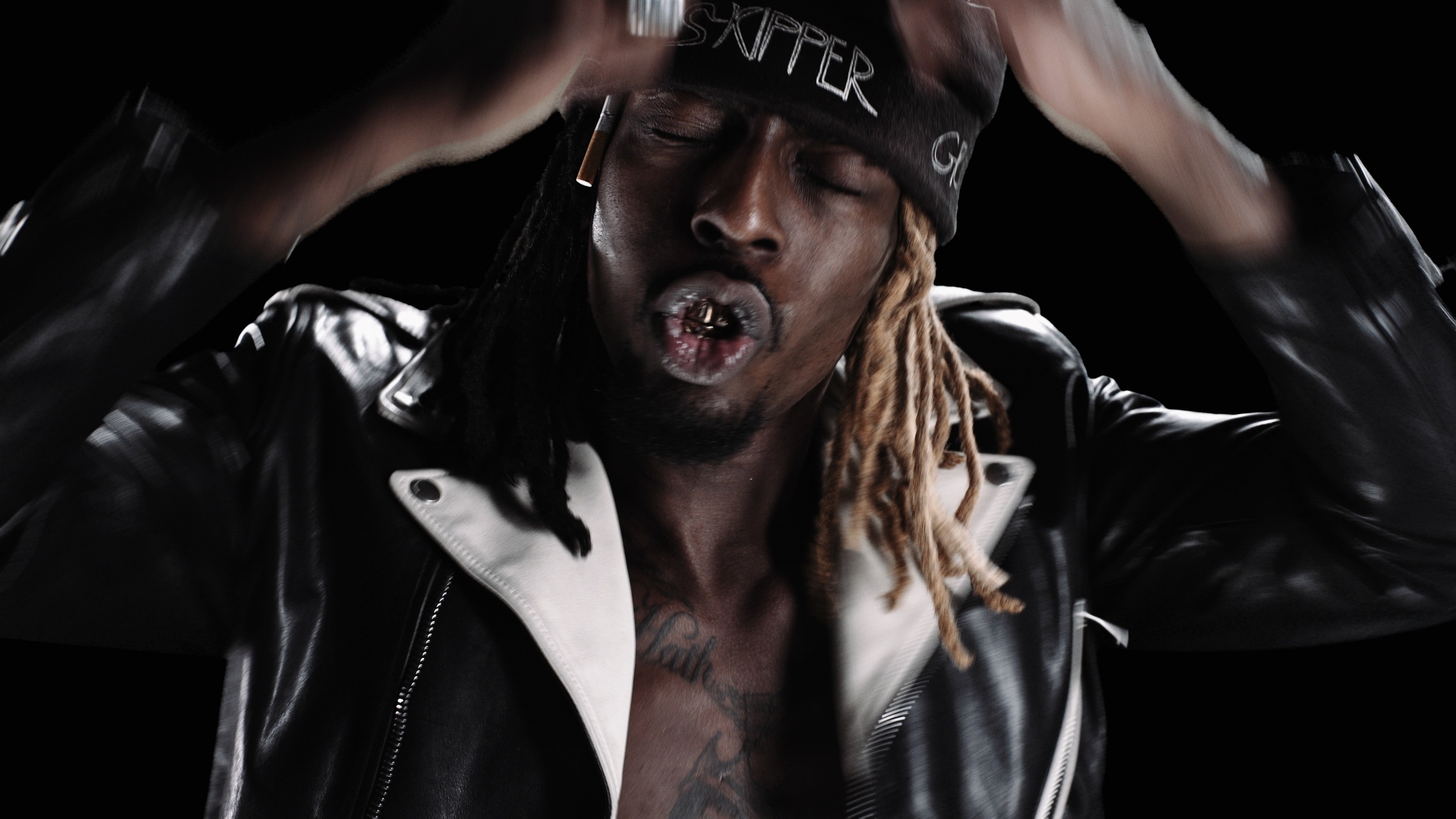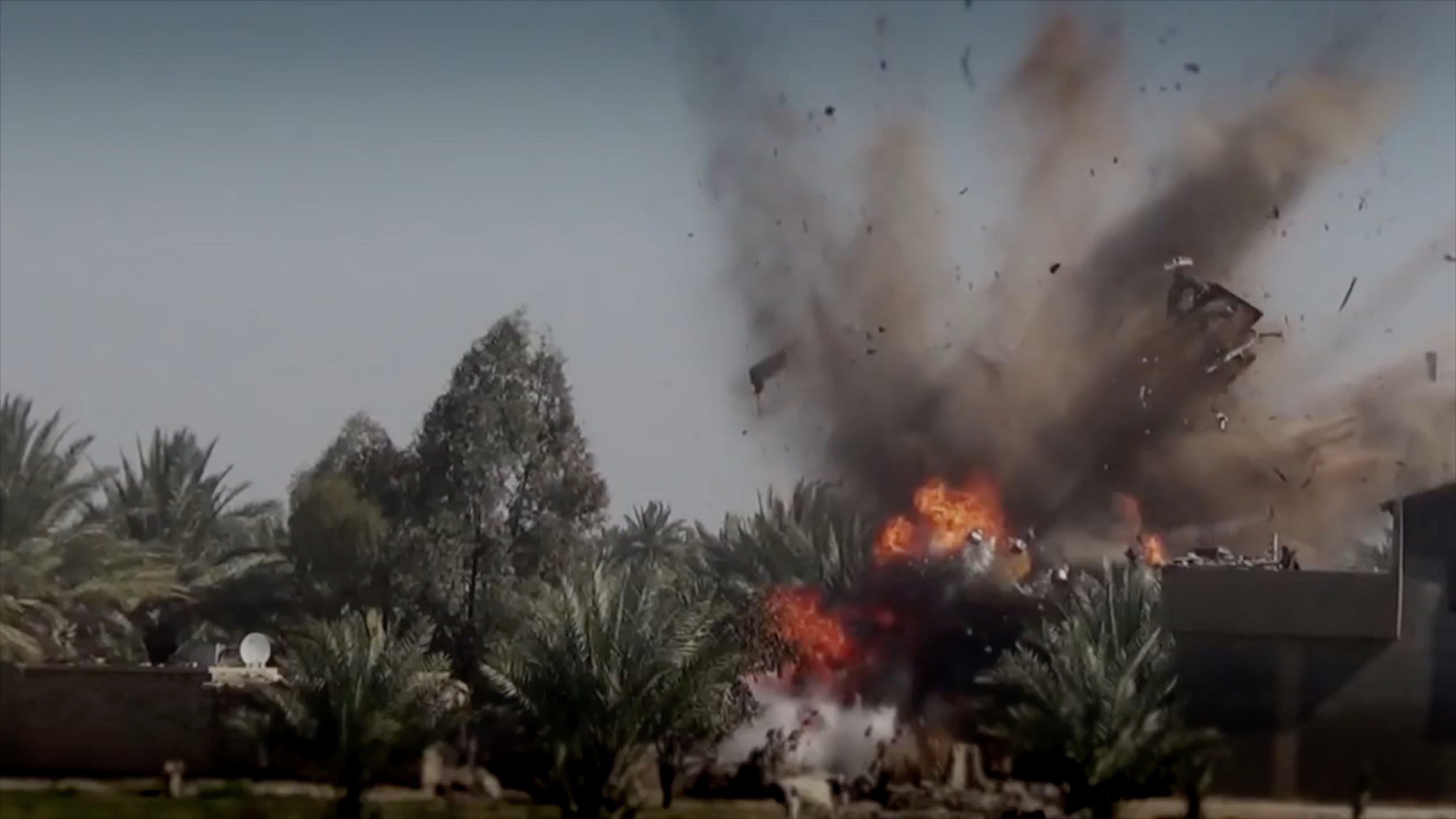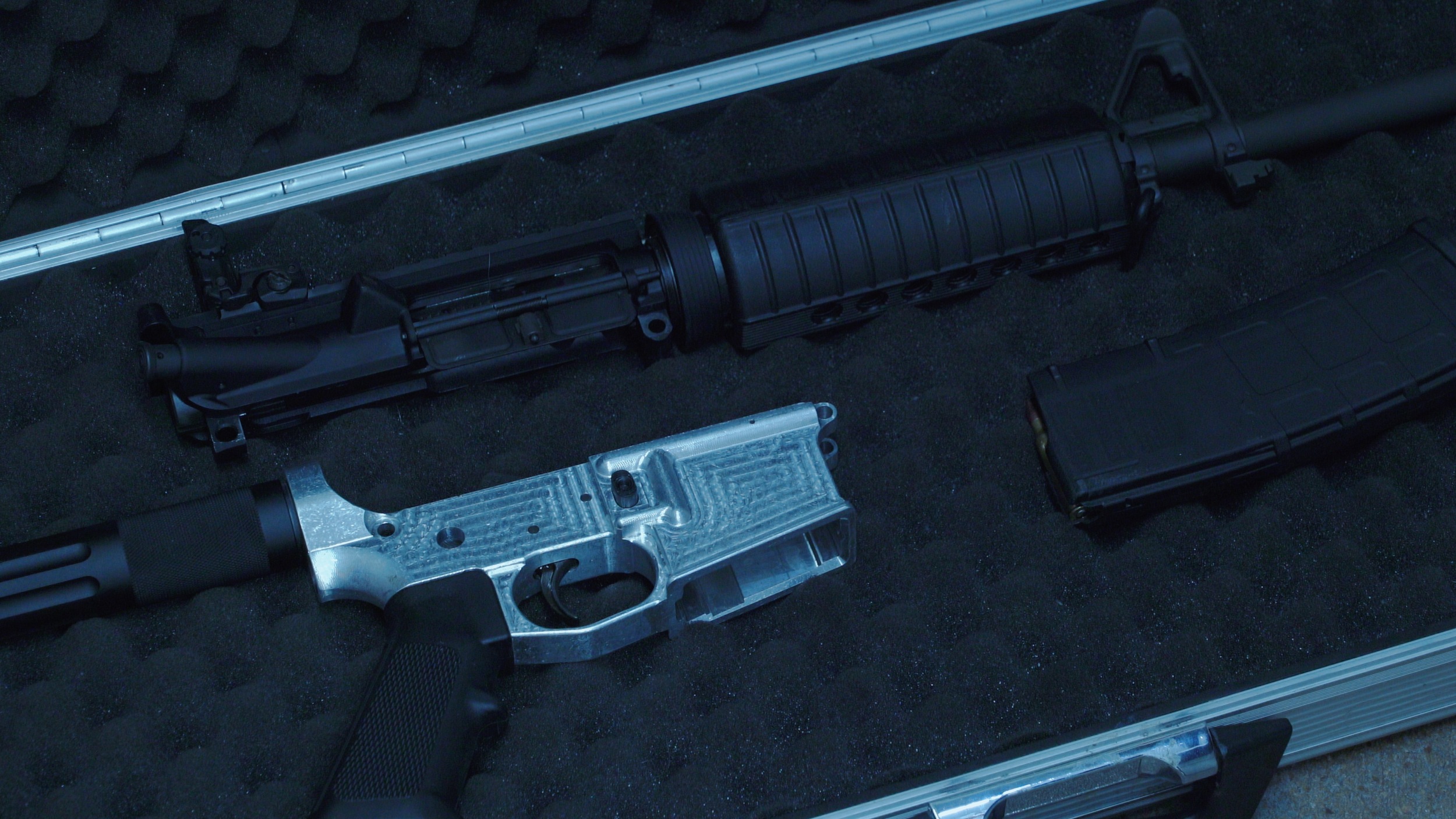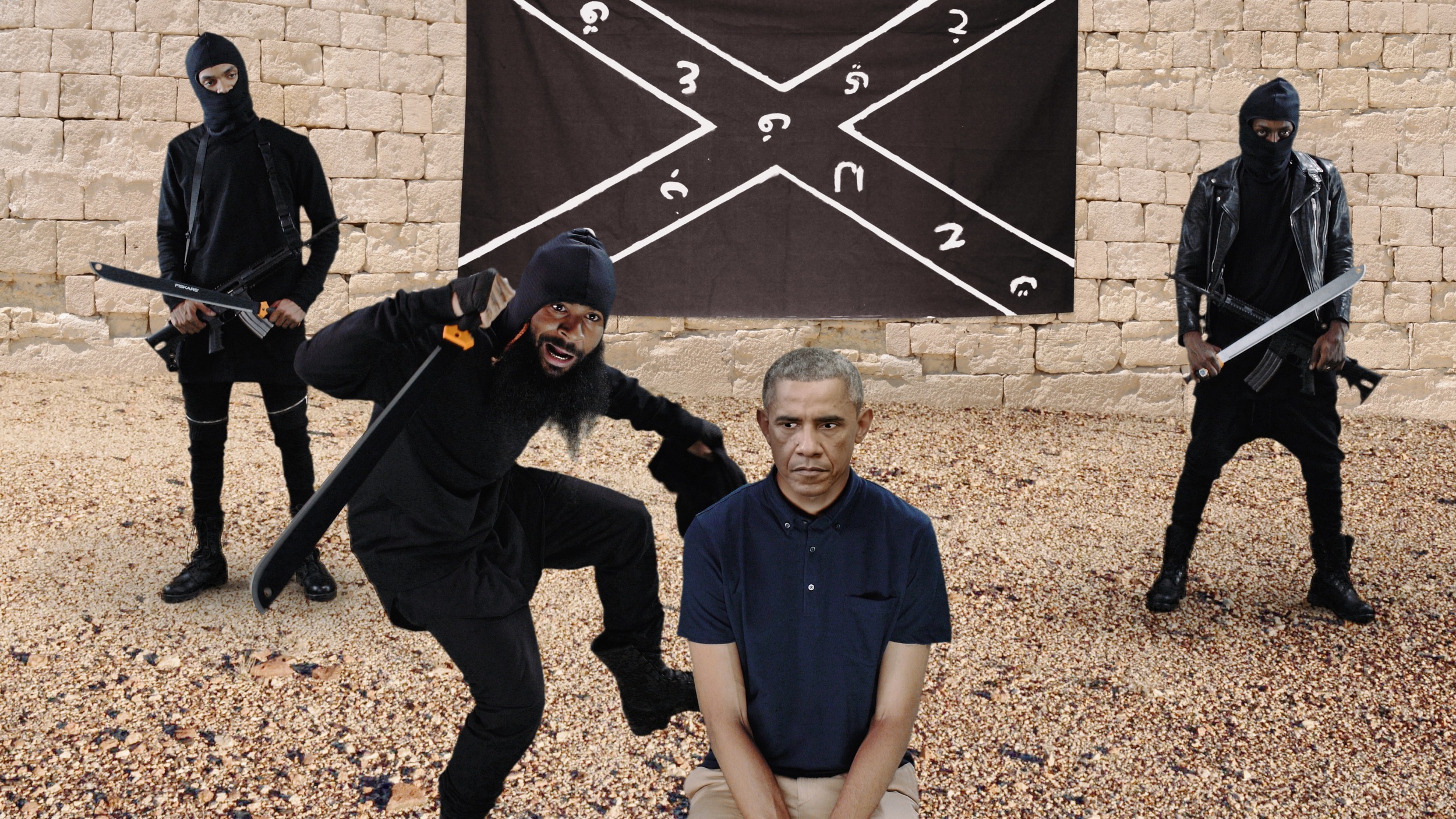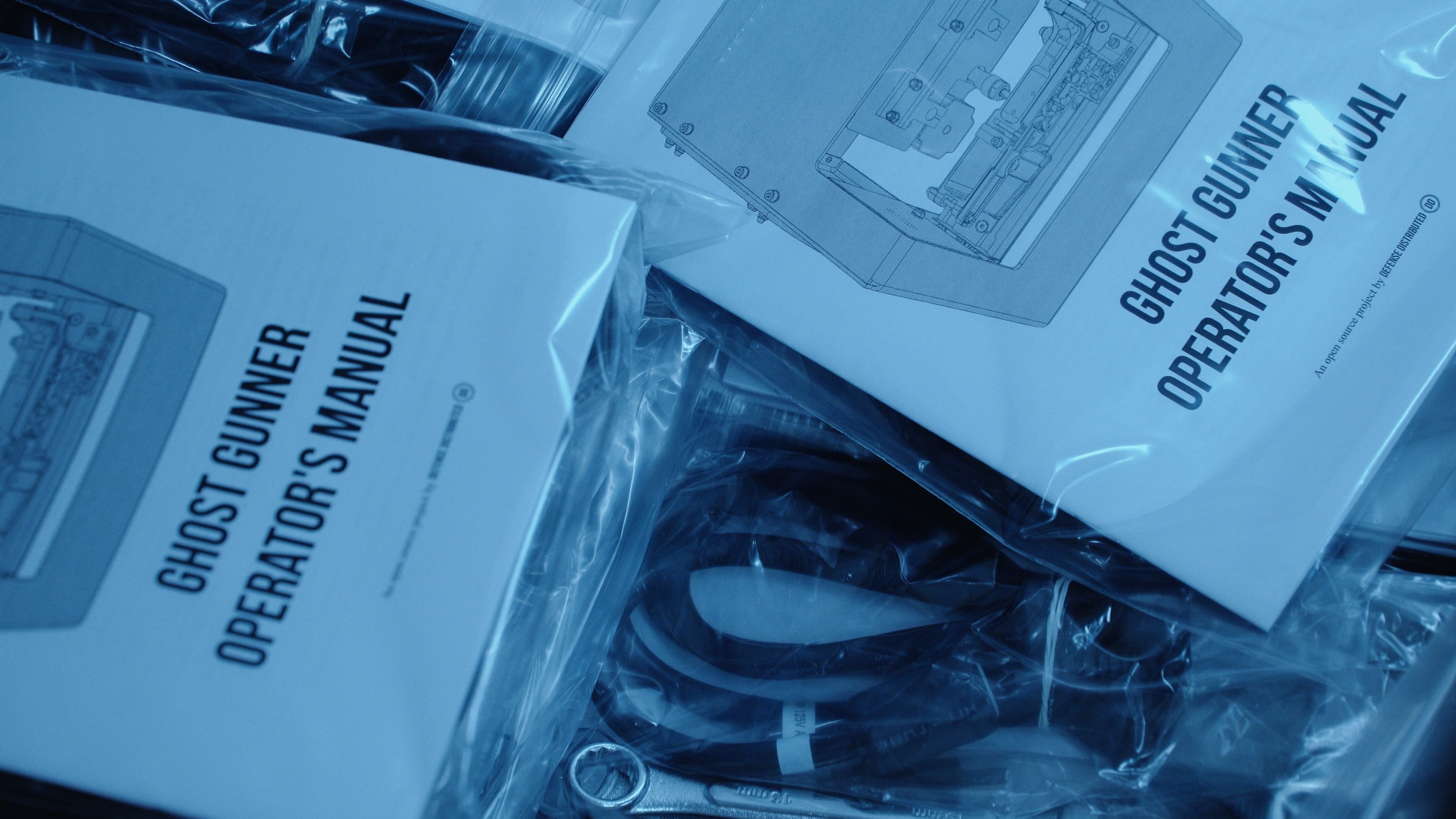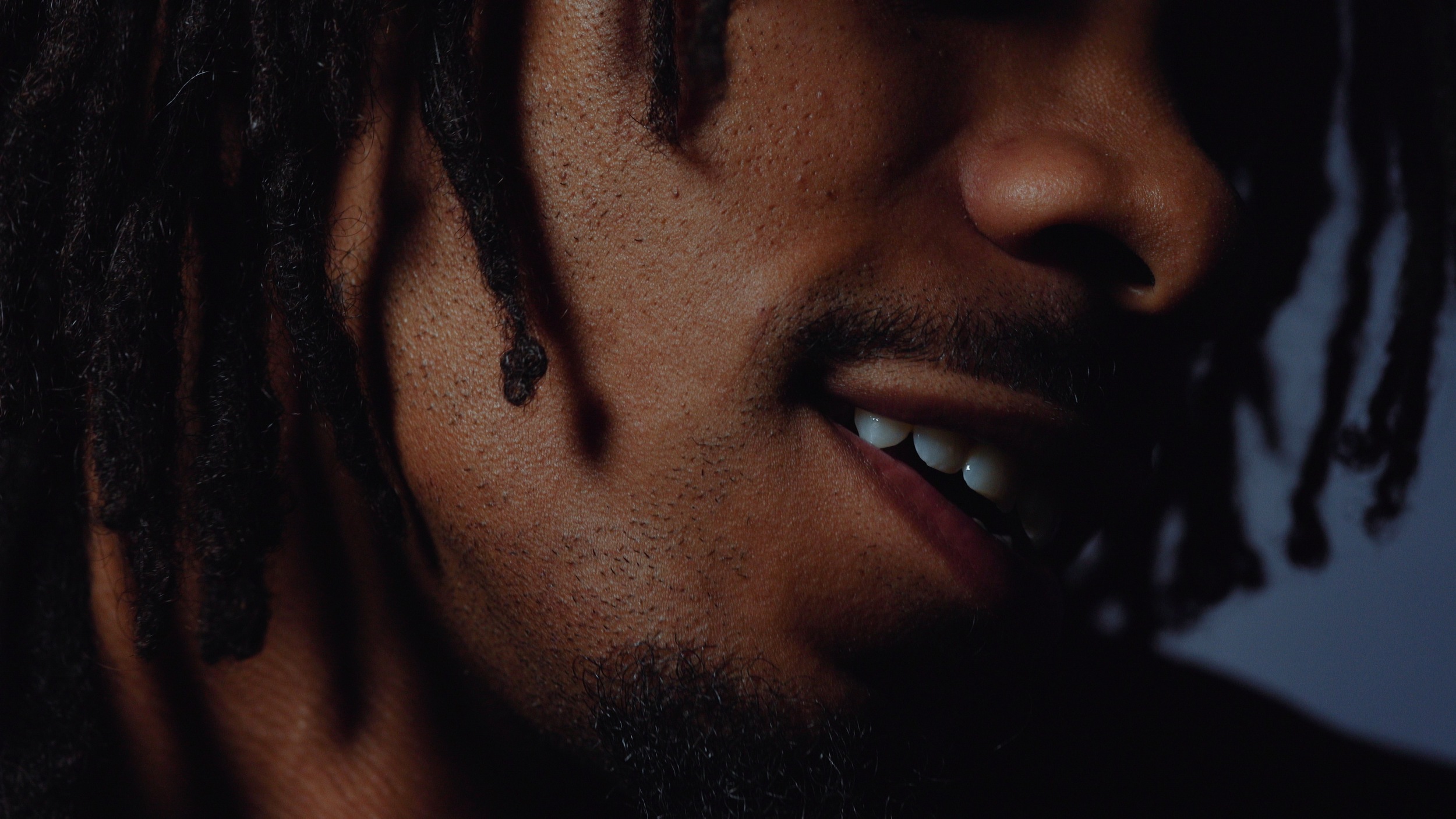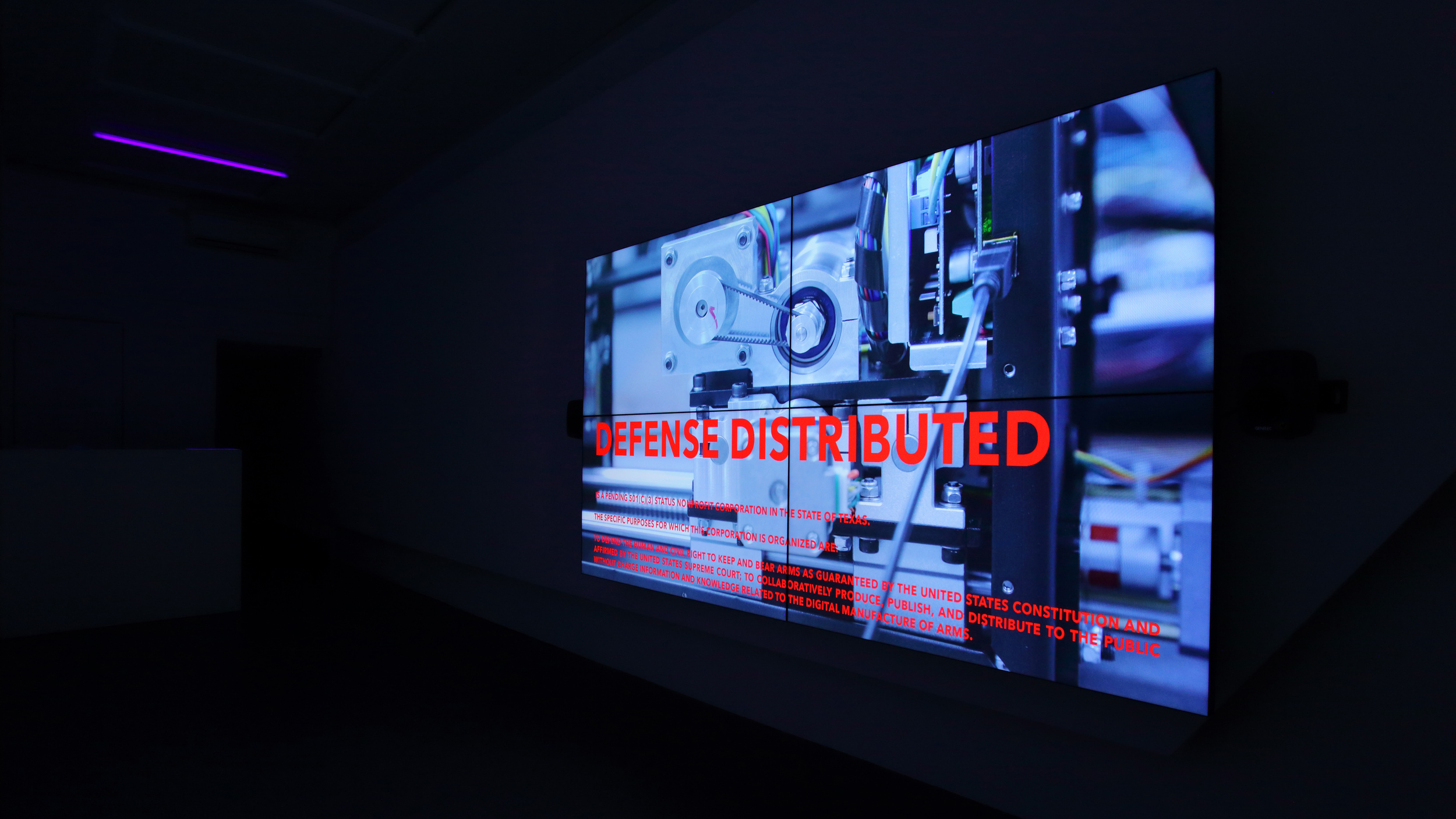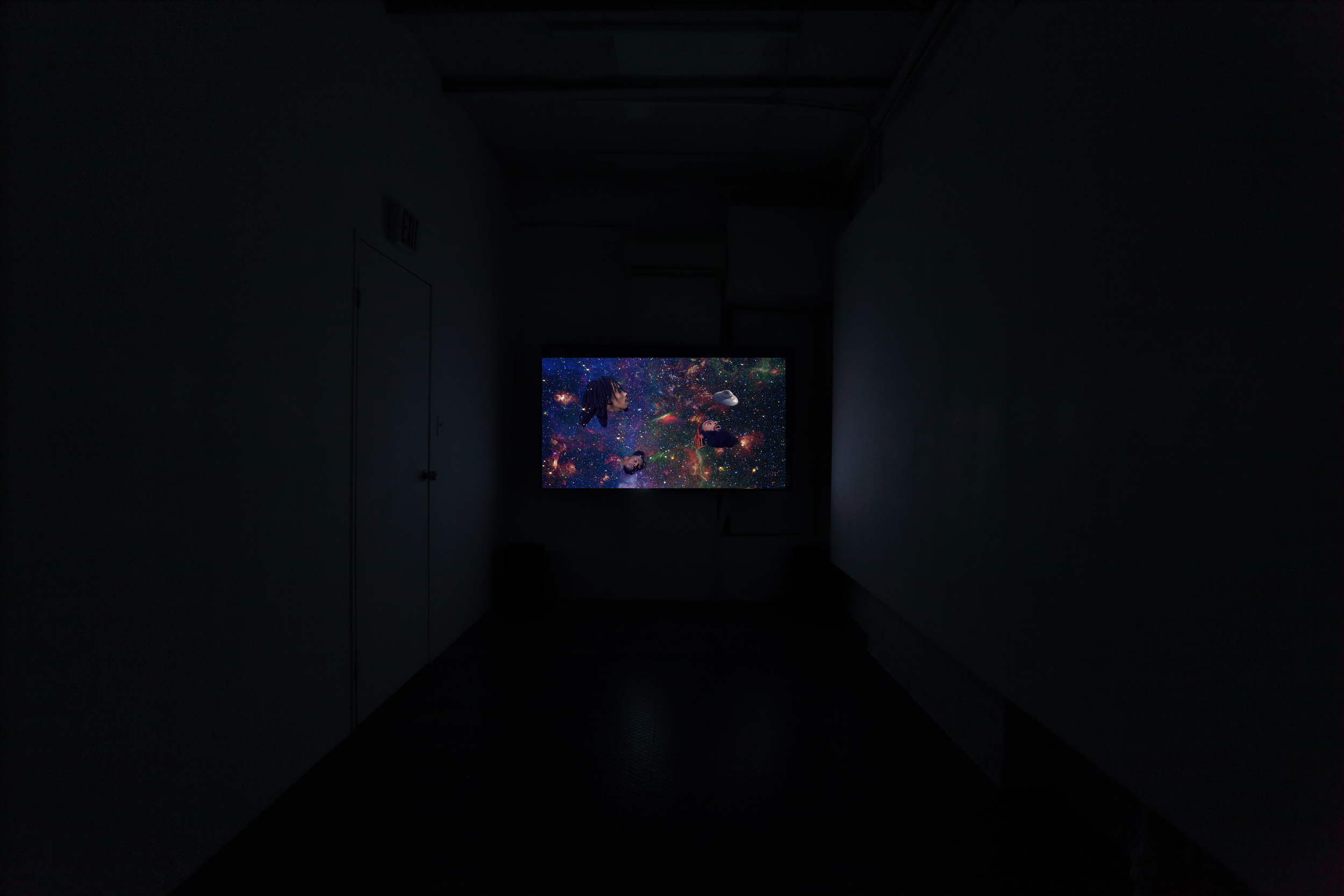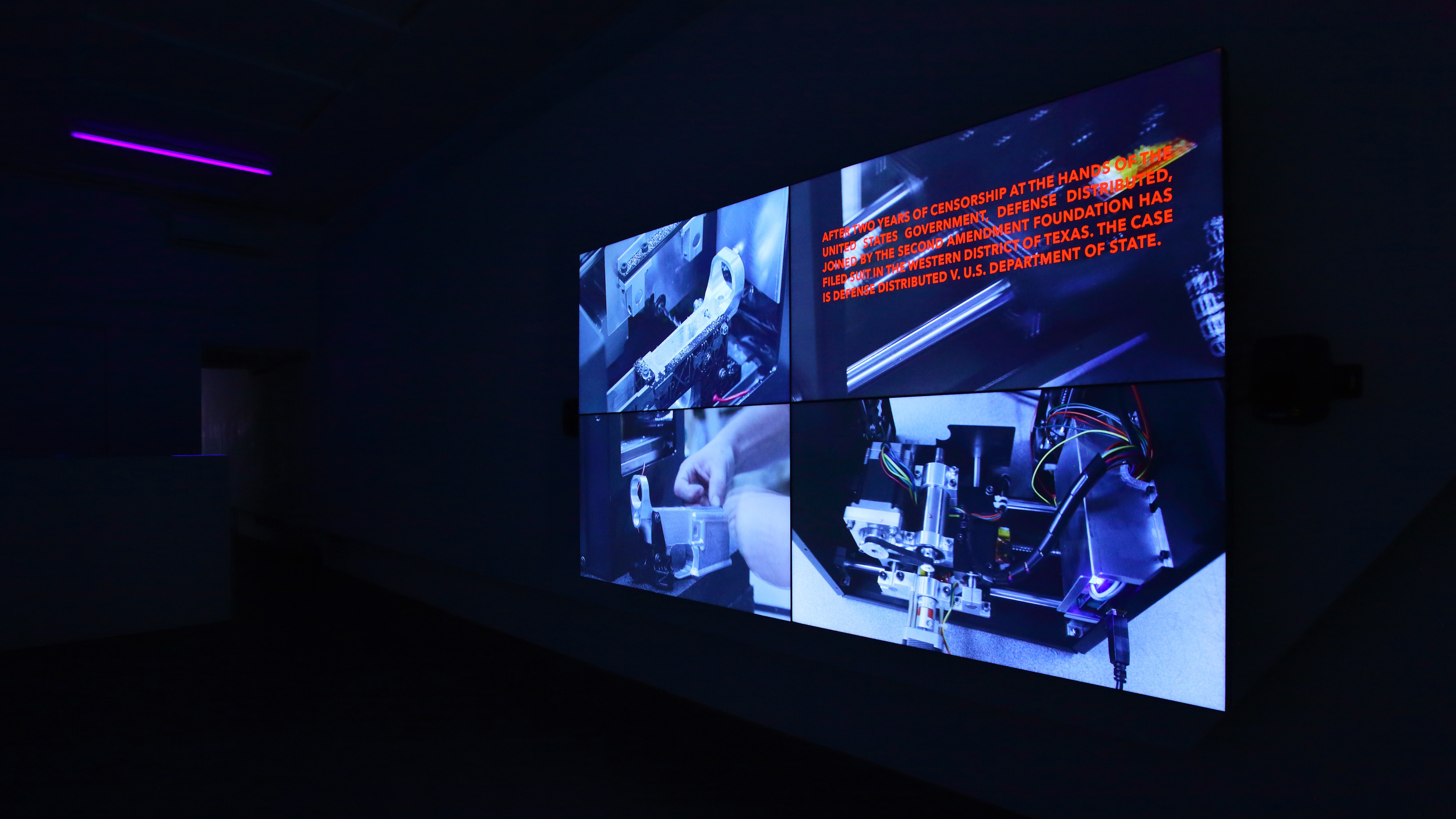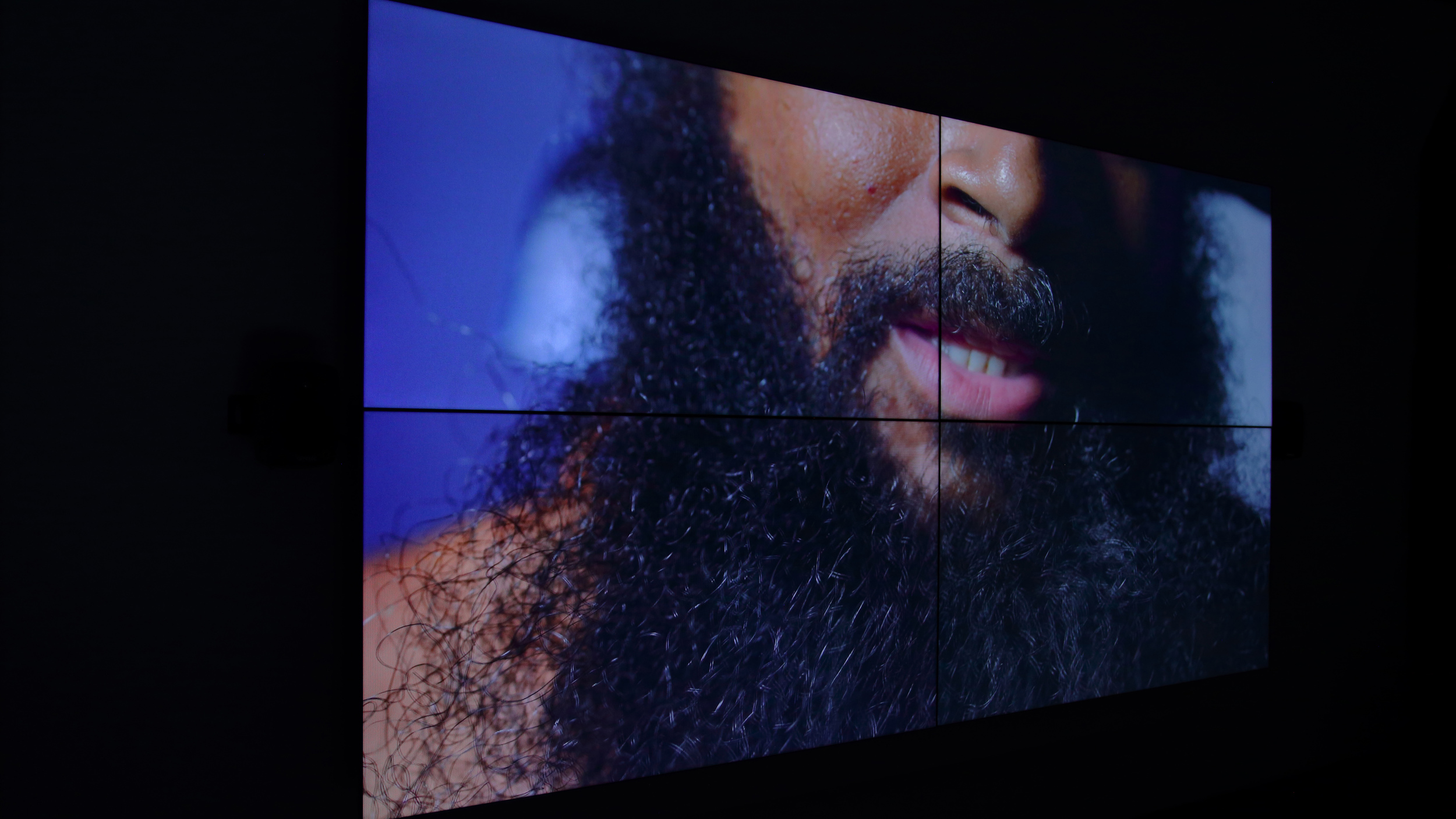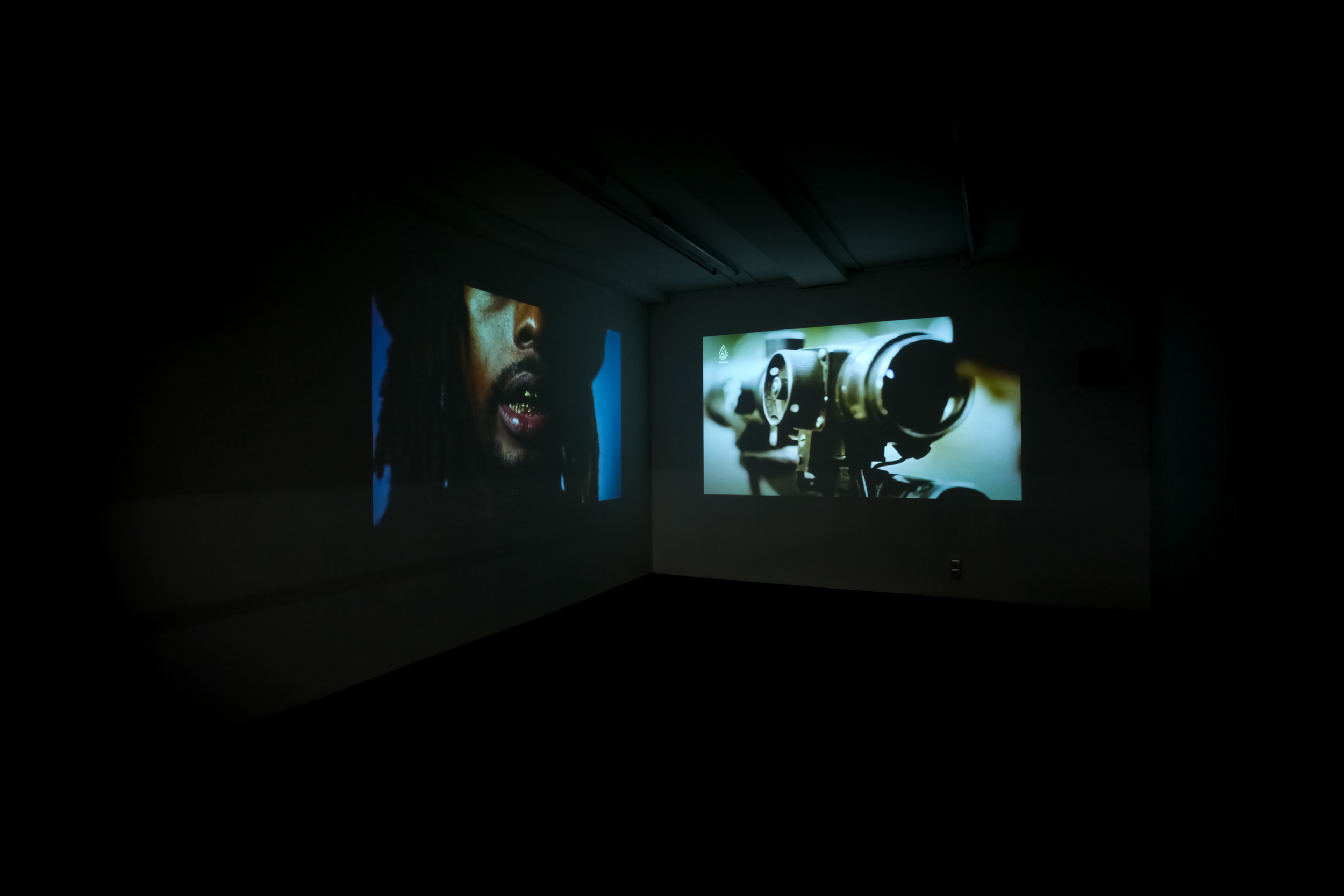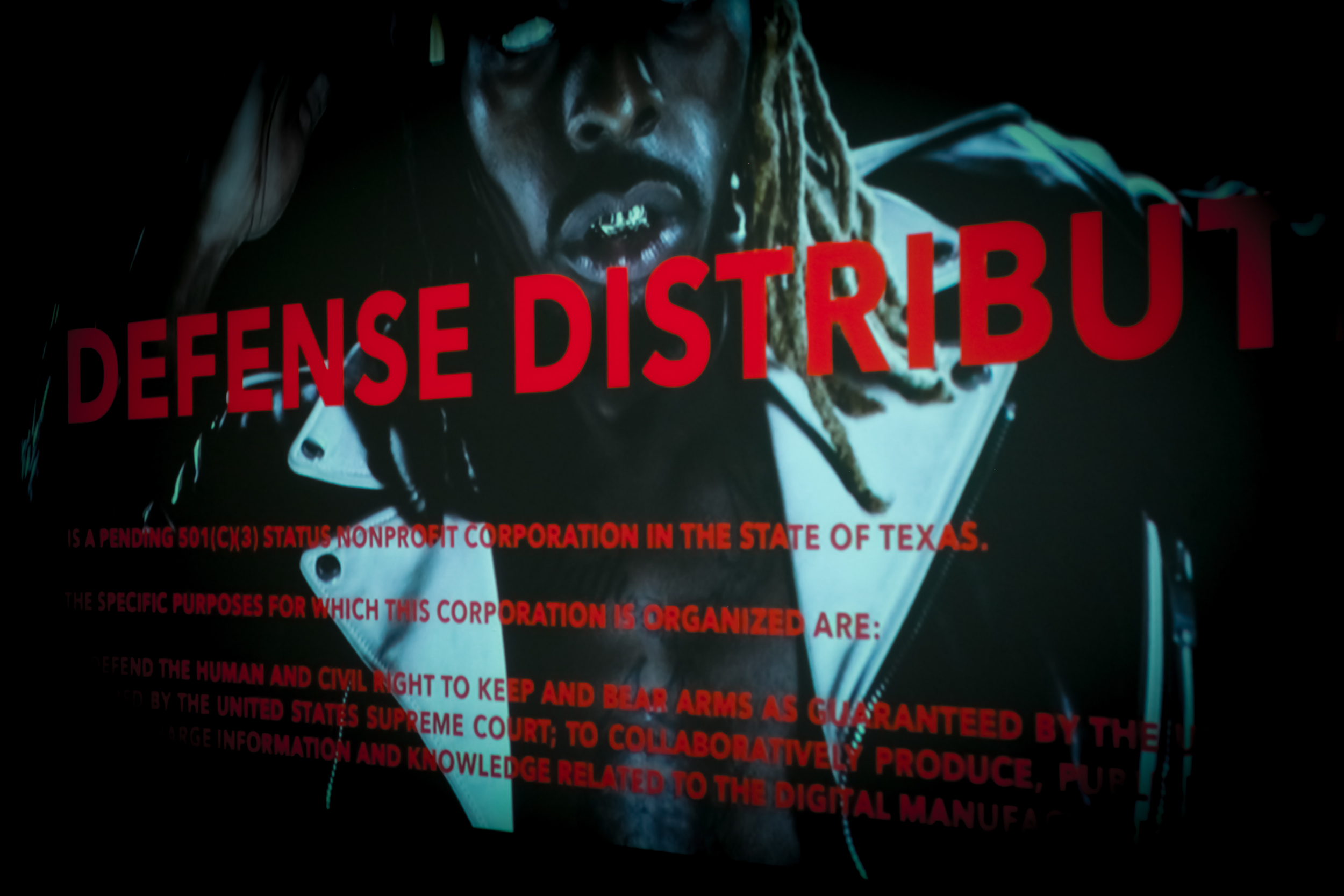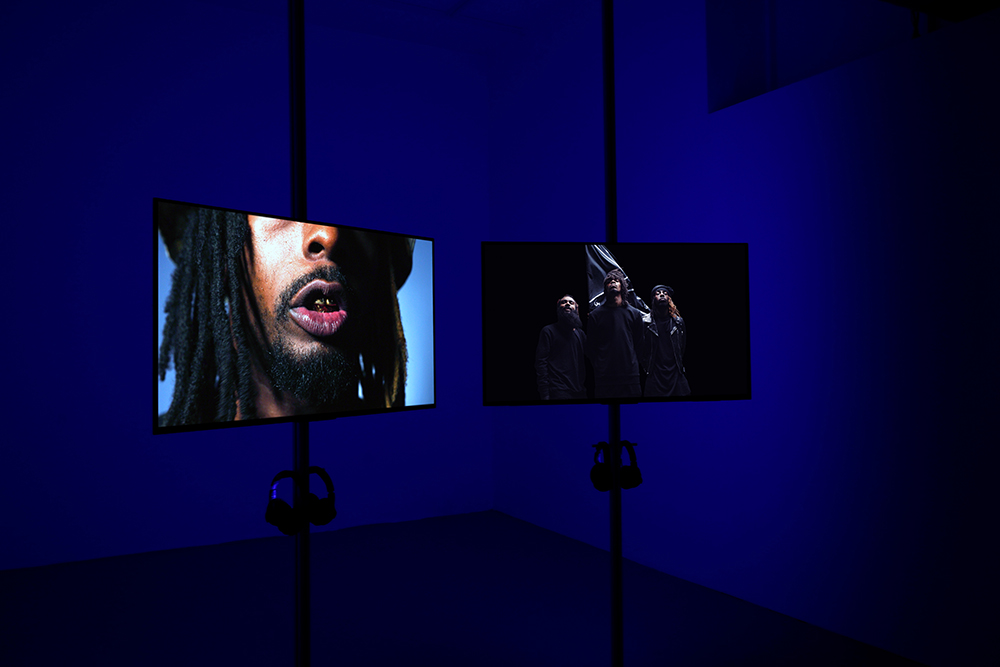#blacktivist
Two synchronized 4K videos, color, stereo, 5'18', USA, 2015
featuring Flatbush ZOMBiES' Blacktivist © 2015
Pfeifer shot the installation’s second part at a 3-D gun-manufacturing workshop in Austin, Texas. “Defense Distributed” is a pending non-profit corporation that gained wide recognition by releasing the blueprints for the first 3D-printable gun. With its current endeavors it supports clients to possess unregistered automatic weapons by enabling them to producing crucial parts of their guns outside of the industrial complex. In its mission statement, which Pfeifer quotes in his work, “Defense Distributed” justifies its open-source and self-manufacturing policies with the Second Amendment, thereby challenging the legal restriction of weapons distribution and gun ownership in the United States.
The song Blacktivist was written by Erick Arc Elliott, Meechy Darko, and Zombie Juice. The music video was released to the public on 9/11 of 2015. Since then it has reached over 2 million hits on YouTube and was widely discussed and featured on music blogs and the press.
[Text by Alexander Koch]
#blacktivist is a statement on police brutality, selective enforcement, and the right of self-defense. Mario Pfeifer conceived this project with the Flatbush ZOMBI ES, a rap group based in Brooklyn. The 2-channel video installation features Pfeifer’s music video for the ZOMBI ES’ new song Blacktivist, that went viral on YouTube within days. It is juxtaposed with the investigation of new techniques for private gun production in the US.
Brute force has become ever more present in the supposedly post-racial society of the Obama era. A massive flow of violent images provided by many due to new communication technologies meets with disturbing stretchings of the interpretation of the Second Amendment. Pfeifer’s video feeds sequences of police violence taken by surveillance and body cameras into the aesthetics of conventional music videos, combined with found footage from the private glorifications of arms, attacks and selfdefense in the Internet.
This disturbing documentation accompanies the Flatbush ZOMBI ES’ lyrics that reflect on the right to free speech, confining social realities, and the omnipresence of violence. At the escalating finale of the video the three rappers turn their weapons against themselves to be reborn as freedom partisans that stand up for a new peaceful movement of change, marching on Brooklyn Bridge.
Diverse contemporary American discourses collide in the installation – from social justice and racism to weapon legislation and the war on terror – producing a misleading impression of cacophony. At least it seems like the audio channels of the parallel videos have been composed to subtly fade into each other at points so that the shrill metallic noises of the milling machine (on the right) doesn’t interrupt the rap track (left) at all but rather doubles as its percussion. Coincidence or by design? The question stays open, much like the question of whether #blacktivist can be understood as a commentary on the artform of rap itself.
Either way, you could feel reminded that rap – like DJing, B-Boying and Graffiti, one of the four pillars of Hip-Hop culture – was originally a pacifying artform. It developed in the Seventies as the bloody gang wars in the Bronx, fought with pistols and knives, were coming to an end. From then on, they fought with rhymes, words were the weapons. That the rappers who sung about guns and murder would go on to become the most successful, seems at once logical and paradoxical, but also that there was always the “conscious” who in turn criticised this. How do the Flatbush ZOMBiES position themselves in relation to the spiral of violence? You’d have to watch #blacktivist to the end...
[Text by Jan Kedves commissioned by Elodie Evers for Willem de Rooij & Mario Pfeifer at ACUD Gallery, 2016]
Three Afro-American rappers pose as jihadists in front of a flag evocative of the IS. They’re shooting a beheading, a bound hostage knees before the camera: Barack Obama. It fades to videos of bombs exploding in a desert. Should Obama be made to atone for his drone wars in Pakistan, Somalia and Yemen? Or, as other video excerpts suggest, should he be held accountable for the fates of Sandra Bland, Trayvon Martin and every black US citizen murdered by police brutality that he, as the first black president of the USA, was somehow unable to prevent? The rap-jihadists get started with the machete and…
It’s no wonder that the music video Blacktivist by the Brooklyn rap group Flatbush ZOMBiES, uploaded on the 11th of September 2015, became an internet sensation. The play count is over 2.6 million by now. It’s optimized for shock value. Social critique, violence, stylish outfits, jazz infused rap and references to the history of black activism in the USA all come together in the video.
But Blacktivist isn’t only a music video, it’s also one of the three parts in Mario Pfeifer’s two-canal video installation #blacktivist (2015). For the first time in Europe, it will be on view at ACUD in Berlin. A (white) German artist collaborating with a New York rap group to produce a music video that meets the standards of the best clickbait but also functions as part of the artist’s work – it just hasn’t been done before.
Pfeifer unfolds the Blacktivist video in his installation and supplements it with two more layers. On one layer: interviews with the rappers from Flatbush ZOMBiES where they distance themselves from filthy rich rap moguls (It should not make you comfortable that you made a billion dollars this year off of fucking music and endorsements, but you don’t give nothing to the neighbourhood). On the other: documentary footage showing how you can print your own handgun with freely available files from the Wiki Weapon Project. No background check required. All you need is access to a 3D-mill.
Installation View: Museum of Contemporary Art / Galerie für Zeitgenössische Kunst Leipzig, Germany, 2016
Mario Pfeifer (born in 1981, Dresden) lives in Berlin and New York. He studied at Städelschule, Frankfurt/Main, and at the California Institute of the Arts, Los Angeles, as a Fulbright Fellow. In 2012, Pfeifer was artist-in-residence at the ISCP, New York. He conceives his film and video works out of specific cultural situations, researches local backgrounds and weaves historic, socio-political, and documentary references into a richly layered artistic practice. Pfeifer has shown his work at MMK, Frankfurt/Main; Frankfurter Kunstverein; Weserburg, Bremen; Los Angeles County Museum of Art; Khoj, New Delhi; and Project 88, Mumbai, among others. His projectApproximation (2014-15) was featured in solo exhibitions at Museo Nacional de Bellas Artes, Santiago de Chile, and KOW, Berlin. Later this year it will be presented at Fotomuseum Winterthur and, on September 22, 7pm, at the Goethe-Institut New York.
Drew Arnold is a new media producer based in New York. His previous projects include the technical direction for Kanye West’s video BLKKK SKKKN HEAD, the creative direction for Beyonce’s performance at the United Nations, as well as her interactive billboard performance for Run The World.
The Flatbush ZOMBIES are a rap trio that formed in the Brooklyn neighborhood of Flatbush in 2010. In 2012, the group released Thug Waffle, their debut video, which was followed by their EP Clockwork Indigo two years later. This year the group collaborated with ASAP Twelvy on the single Half-Time, with Domo Genesis on Plz Don’t Make Me Do It, and with Mario Pfeifer and Drew Arnold on#blacktivist. Bolstered by a legion of fans, the Flatbush ZOMBIES perform at sold-out venues across North America and Europe.
The exhibition is made possible with the generous support of KOW, Berlin, and the video walls powered by ArtPlay, New York.
[Text by Vivien Trommer]
Read more on Genius.com
MINI/Goethe-Institut Curatorial Residencies Ludlow 38 is pleased to present #blacktivist, Mario Pfeifer’s first exhibition in the United States, featuring a new video work produced by the artist and co-directed with Drew Arnold. The 4K video features the new song Blacktivist, written by Erick Arc Elliott, Meechy Darko, and Zombie Juice, who form the Flatbush ZOMBIES, a rap group based in Brooklyn. Conceived as a collaborative project, it reflects on police brutality, selective enforcement, and the right of self-defense. Scenes reminiscent of the aesthetics of conventional music videos come together with found footage, documentary shots, and 3-D animations to form a critical analysis of our times. At its core, #blacktivist asks how violence and repression are negotiated and reappraised in a supposedly post-racial society. The exhibition runs through October 25.
#blacktivist aims to take a stand on current events. The title refers to “black activist on activist,” the first verse of the song by the Flatbush ZOMBIES, which is followed by ambiguous references to everyday and consumer culture in the United States. In addition to delivering critical commentaries on the world of television, the lyrics reflect about the First and Second Amendments, which protect the right to free speech, freedom of religion, as well as the right to bear arms for self-defense. In the video, the conflict between armed self-defense and escalating gun violence are juxtaposed with the meaning of images and the power of the voice. Sequences of police violence taken by surveillance and body cameras as well as mobile devices show the escalation of the conflict. In other scenes, the Flatbush ZOMBIES perform in a 3-D animated world between digital hashtags, cinematic transitions, and chroma key landscapes, while addressing current events in world politics. The narrative culminates with the rappers being reborn as pacifist freedom fighters.
The second part of the exhibition features a multi-channel video installation that analyzes the music video through documentary sequences produced at a 3-D gun manufacturing workshop in Austin, Texas. Defense Distributed is a pending non-profit corporation that in its mission statement justifies its open-source weapon designs with reference to the right of self-defense, thereby challenging the legal and economic monopoly of weapon distribution in the United States. #blacktivist is thus not (just) a music video, but a reflection on the significance mediated imagery for our society.
Co-Director / Post-Production: Drew Arnold
Second Camera Operator: Steven Gatti
Co-Director's Assistant: Xaivia Inniss
Gaffer: Ari Schaffer
Grip: Haitham "Sammy" Rostrom
Prop Handler: Ken Ågain Master
Production Assistant: Alexander Kellogg
September 9, 2015 - October 25, 2015
Commissioned by MINI/Goethe-Institut Curatorial Residencies Ludlow 38
Producers: Mario Pfeifer, Vivien Trommer/ Ludlow 38, Raphael Oberhuber/ KOW
Director / Editor: Mario Pfeifer
Director of Photography: Michael Intile, Mario Pfeifer
Green Screen Post-Production: Alec Iselin
Styling / Wardobe: Sarah Hein
Make-Up Artist: Sonam Chandna
Production Assistant: Kevin Westphal, Biancha Bacchantin
Digital Image Transfer: Stanislaw Grünstein
Cast: Jade. M Elliott
Green Screen: Bravo Studios, New York City
Special Acknowledgement to Codie Wilson and the Defense Distributed HQ, to Flatbush ZOMBiES and Josh Dick.
© Mario Pfeifer / KOW, 2015
© Blacktivist - Flatbush ZOMBiES, 2015
Blacktivist, EP, transparent vinyl, 2016
More infos here.
Selected Press
Monopol Magazin, August, 2016
Mehr als Bling, Mehr als Picasso Baby! by Daniel Völkzle
A Nation of Billions, July 2016
This is a Nation of Lost Soul – Marium Raja in conversation with Mario Pfeifer
Artsy Feature, April 2016
Why Artist Mario Pfeifer’s Method Might Just Change the World by Alexander Forbes
Art in America, March 2016
Walking the Armory with Jenny Jaskey by Wendy Vogel
Artsy, March 2016
Molly Gottschalk on Armory Fair's Top Ten Emerging Artists
Ocula, March 2016
Brienne Walsh on Armory Fair's Top 5 Booths
Masked Gorilla’s 30 Favorite Music Videos of 2015, December 2015
Masked Gorilla
Top 25 Music Videos of 2015, December 2015
Stephen Butchard / verymuchmusic
Music Video of the Year – Blacktivist, December 2015
Marcel Foley
Artforum online, October 2015
Julian Elias Bronner on #blacktivist, Ludlow38, New York
#blacktivist:: Quand l'art contemporain absorbe le hip-hop, October 2015
Aurélien Poirson-Atlana on #blacktivist, Ludlow38, New York
On Millitant Otherness, September 2015
Michael Anthony Farley er on #blacktivist, Ludlow38, New York
Installation View: Mario Pfeifer, Willem de Rooij, ACUD gallery, Berlin, 2016
Making of #blacktivist © 2015
Installation View: Pylon Lab, 2019
Exhibitions / Screenings
The Power Plant Toronto, 2019
Rural Technology, Pylon Hub, Dresden, 2019
There will come soft Rains, Basis, Frankfurt am Main, 2018
Tension & Conflict, MAAT, Lisbon, 2017
Burried in the Mix, MeWo Kunsthalle Memmingen, 2017
European Media Arts Festival, Osnabrück, 2017
Truth Politics, GEGENKINO, Leipzig, 2017
Trauma & Revival, Bunker Stuzki, Krakow, 2017
Untitled, San Francisco, 2017
Say it Loud! 5th Art of Transformation Series, Florida, USA, 2016
Galerie für Zeitgenössische Kunst | Museum of Contemporary Art, Leipzig, Germany, 2016
ACUD gallery, Berlin, Germany, 2016
Art Cologne, 2016
The Armory Show, New York, 2016
62nd International Short Film Festival Oberhausen, Germany, 2015
Ludlow 38, New York, USA, 2015
